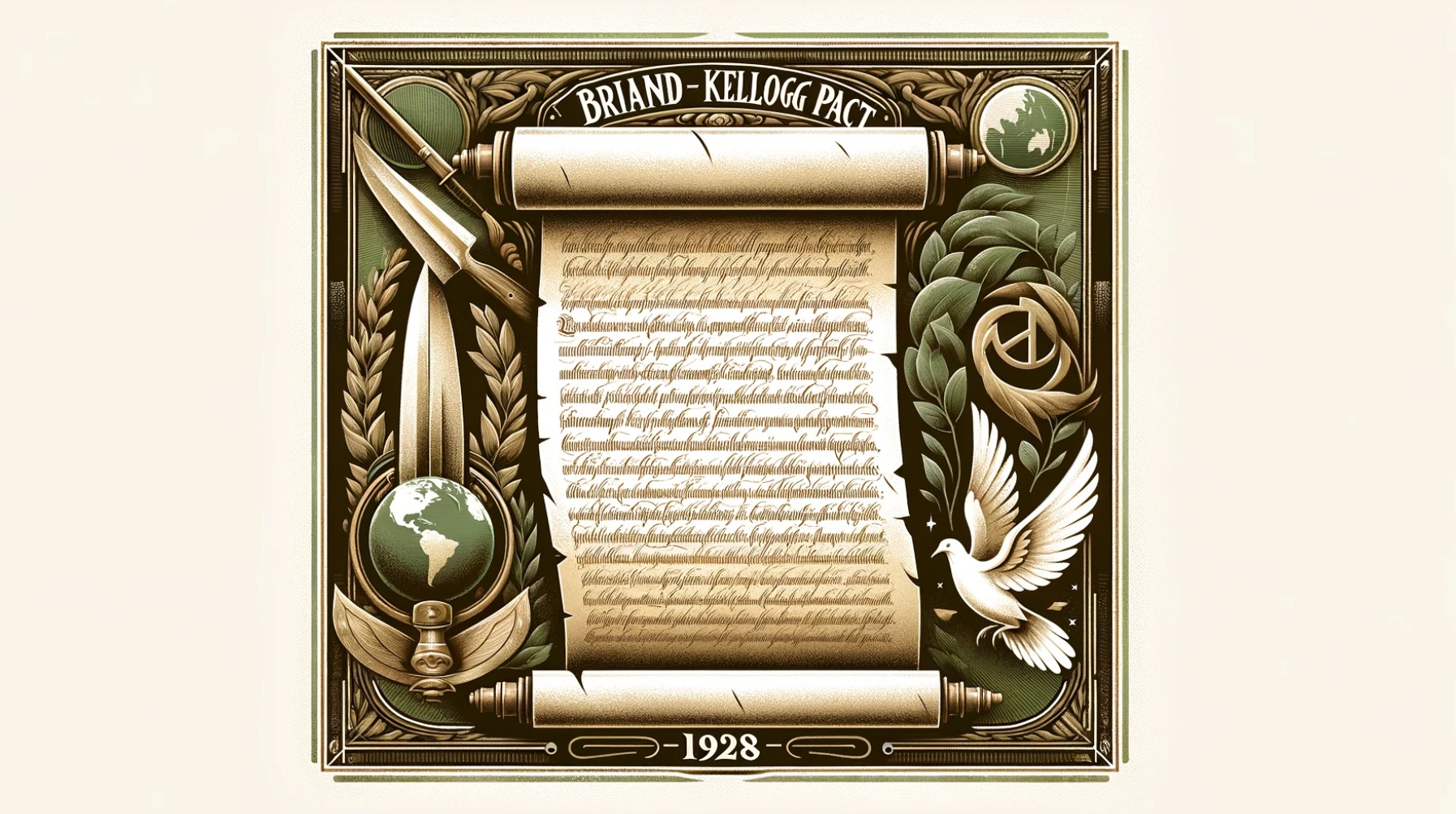In the aftermath of World War I, the world sought mechanisms to prevent such a devastating conflict from happening again. One such attempt was the Briand-Kellogg Pact of 1928, a treaty that aimed to outlaw war among nations. This post explores what the Pact entailed, why it failed, and speculates on whether such an agreement could ever function effectively in the global arena.
What is the Briand-Kellogg Pact?
The Briand-Kellogg Pact, also known as the Pact of Paris (or the Kellogg-Briand Pact), was signed on August 27, 1928. Proposed by French Foreign Minister Aristide Briand and U.S. Secretary of State Frank B. Kellogg, the pact was groundbreaking in its attempt to establish peace as a normative part of international relations. Unlike other treaties, it did not just aim to prevent conflict between two specific countries but sought to abolish war as a tool of national policy altogether. Eventually, the treaty was ratified by 62 nations, including major powers like the United States, the United Kingdom, France, Germany, Italy, and Japan.
Why Didn’t the Pact of Paris Work?
Despite its noble intentions, the Briand-Kellogg Pact failed to prevent future conflicts, evident as the world spiraled into World War II just over a decade later. Several factors contributed to its ineffectiveness:
- Lack of Enforcement Mechanisms: The treaty had no provisions for enforcement or sanctions against violators, relying solely on the moral commitment of the signatories.
- National Interests: The treaty did not account for the security concerns and geopolitical interests of different countries, which continued to drive nations toward conflict when they felt threatened or when diplomatic efforts failed.
- Economic and Political Crises: The economic turmoil of the 1930s, including the Great Depression, led to political instability. Extremist movements gained traction, often promoting aggressive, expansionist national policies that contravened the spirit of the Pact.
- Ambiguities and Exceptions: The pact allowed for war in cases of self-defense, a term that was not clearly defined, thus open to interpretation by the signatory states according to their interests.
Could It Ever Function?
The idea of outlawing war is as appealing today as it was in 1928, but for such a pact to function, several conditions would likely need to be met:
- Global Governance Structure: An effective international body equipped with the power to enforce such treaties and arbitrate disputes would be crucial.
- Economic and Political Stability: A stable international climate, both economically and politically, would reduce the incentives for war.
- Cultural Shift: Perhaps most importantly, there would need to be a global cultural shift towards conflict resolution through diplomacy and legal mechanisms rather than through war.
Conclusion
The Briand-Kellogg Pact represents a poignant chapter in the quest for peace, serving both as a beacon of hope and a lesson in the complexities of international law and relations. While it was unsuccessful, it laid the groundwork for future international agreements and has enduring relevance in discussions on how to create a more peaceful world.
Sources:
- The Editors of Encyclopaedia Britannica. (1998, 20 julio). Kellogg-Briand Pact | Facts, Purpose, & Significance. Encyclopedia Britannica. https://www.britannica.com/event/Kellogg-Briand-Pact
- Milestones: 1921–1936 – Office of the Historian. (s. f.). https://history.state.gov/milestones/1921-1936/kellogg









No responses yet